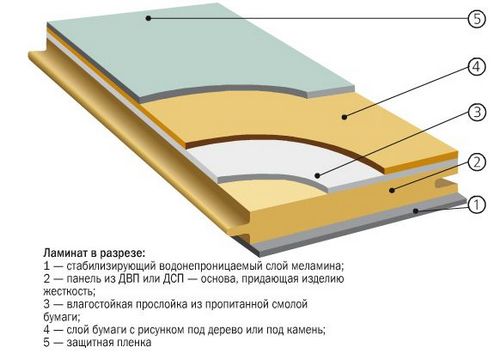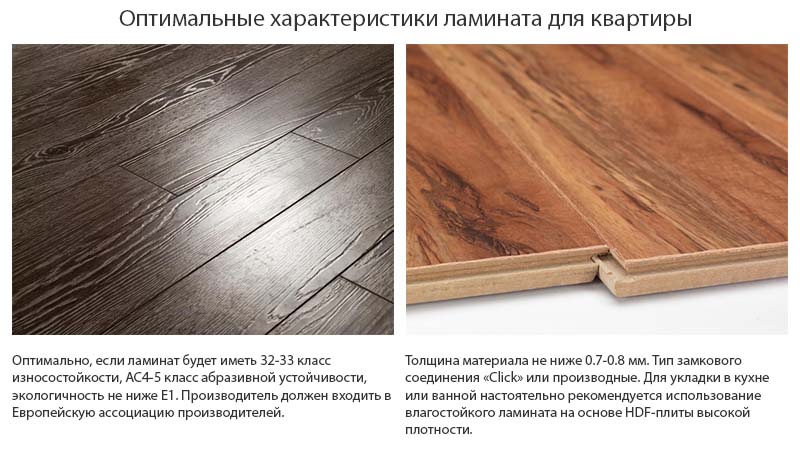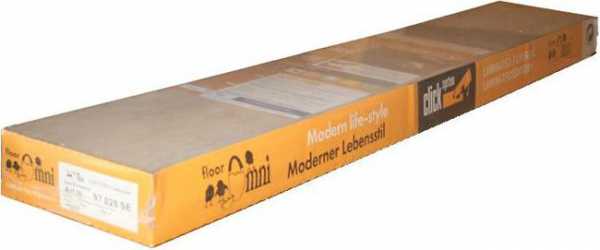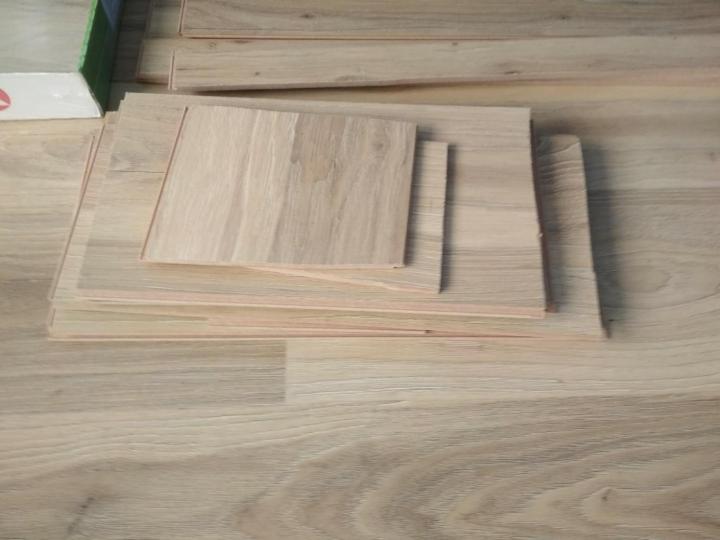What thickness of laminate is best to choose for an apartment?
 Creating a comfortable microclimate in a living space depends on the quality of finishing materials. Laminate flooring, which is gaining popularity due to its reliability and large selection of colors, is distinguished not only by the linear parameters of the panels, but also by thickness. The use of one or another standard size is determined by the purpose of the coating, as well as operating conditions.
Creating a comfortable microclimate in a living space depends on the quality of finishing materials. Laminate flooring, which is gaining popularity due to its reliability and large selection of colors, is distinguished not only by the linear parameters of the panels, but also by thickness. The use of one or another standard size is determined by the purpose of the coating, as well as operating conditions.
The content of the article
Characteristics of laminate sizes
Panel manufacturers produce finishing materials of various lengths and widths. This contributes to ease of installation and aesthetic perception of the finished coating. There are three standard length parameters:
- 126 cm;
- 138 cm;
- 185 cm.
When installing in a small area, it is inconvenient to use long lamellas, so short blanks are used.
Laminate is also distinguished by width:
- 9–16 cm;
- 18–20 cm;
- up to 33 cm;
- up to 40 cm.
The use of panels up to 20 cm wide has found wide application. Installation and cutting of such blanks is less labor-intensive than laying larger lamellas. Large-width laminate is used to create a specific pattern for tiles or artistic parquet.
An important parameter of the material is thickness (height). The panels consist of four layers, each of which performs a separate functional purpose.

The size of the panels varies in thickness from 4 to 15 mm, and has different load resistance classes:
- 4-5 mm, classified as light level, which corresponds to class 21–23;
- 6–8 mm, for medium loads, which is typical for class 31;
- 10–12 mm are made for medium and difficult operating conditions, classified as class 32–33;
- 12 mm or more (class 34) for use with heavy loads.

REFERENCE! The specified classification may differ from the products sold, since manufacturers, using wear-resistant films, increase the class without changing the height of the panel!
Depending on whether the lamellas belong to one category or another, the cost of the material increases in direct proportion to the size and wear resistance. The loads that the floor covering must withstand are fundamental when choosing thickness.
REFERENCE! Lamels with a height of 10–12 mm are considered practical. This standard size is used in premises for various purposes, including public places.
What does the thickness of the laminate affect?
The thicker the coating material is, the longer it will serve its purpose compared to the thinner one. This size is the most important when choosing panels. The height of the coating affects:
- on the rigidity of the locks;
- stability indicator of adjacent lamellas;
- for sound insulation;
- thermal conductivity, it is important to take into account when laying on a warm floor;
- resistance to loads;
- improves the evenness of the floor surface.

It is more convenient to install from thicker material; when laying thin slabs, there is a risk of damage to the locks. An inconvenience when working with lamellas of large thickness is the increased requirement for the cutting tool, which is used to cut workpieces of the required length.
What thickness of laminate to choose for home and apartment
When installing panels in a residential area, professionals strongly recommend using a material of at least 7 mm. The most common laminated coating is 8 mm panels, which are used for installation in the bedroom, living room or hallway. This material is considered average in terms of price and durability, which allows you to maintain the quality of the coating for 15–20 years.
In the absence of sufficient funds, a coating of class 31 (6-7 mm) is laid, taking into account the need for more careful installation and a possible reduction in service life.

IMPORTANT! If there are small children in the house, then it is better to purchase slats with a thickness of at least 8 mm, with a wear resistance rating of class 32. This will protect the laminate from damage by a child.
To increase the service life of the panels, the floor is covered with 9–10 mm material. There is no need to lay a coating with a thickness of more than 10 mm in a residential area, since the load on the floor in an apartment is less than in public places. When calculating the thickness, take into account the need for installation on a special substrate and the same height at transitions with other types of coatings. These transitions are covered with a decorative strip, but the height of the difference should not differ by more than 2 mm.
IMPORTANT! To preserve the laminate during operation, it is forbidden to drag heavy furniture across the surface, and when installing massive sets, it is recommended to place fiberboard stands under the supports to reduce the load!
After deciding on the thickness of the lamellas, it is determined what length and width to choose so that the amount of waste is minimal. Then the desired coating is acquired.





